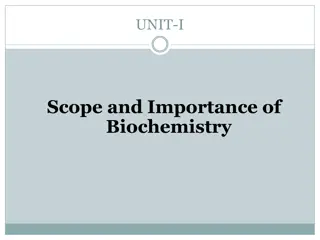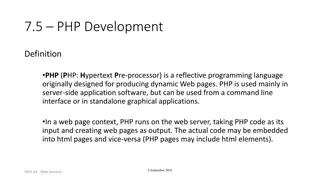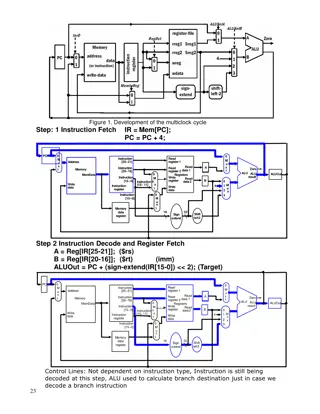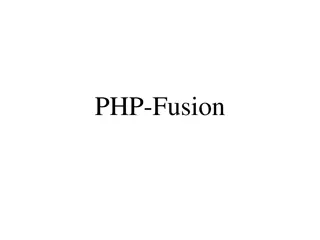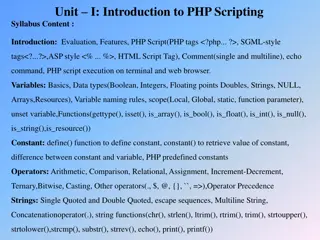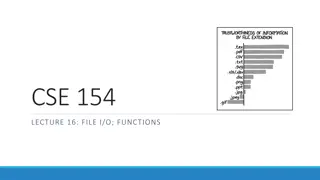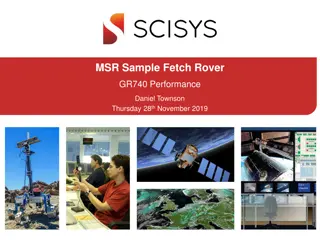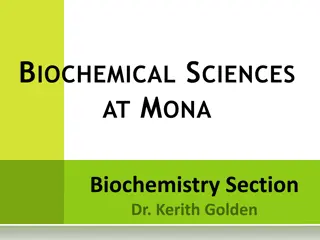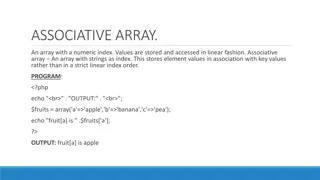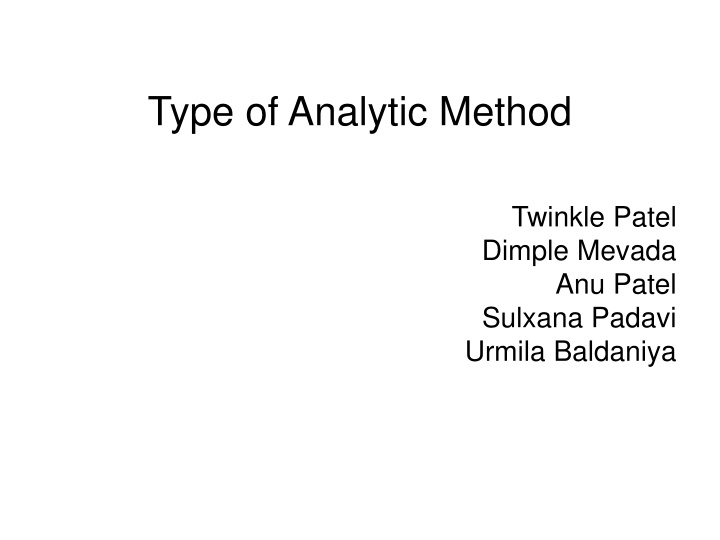
Principles of Analytical Methods for Enzyme Kinetics
Explore the principles of various analytical methods used in enzyme kinetics, including End Point Method, Kinetic Method, and Fixed-Time Kinetic Method. Learn how reactions between substrates and reagents form colored complexes, and how enzymatic reactions are measured based on substrate or enzyme concentrations. Dive into the specifics of each method and understand their applications in enzyme kinetics analysis.
Download Presentation

Please find below an Image/Link to download the presentation.
The content on the website is provided AS IS for your information and personal use only. It may not be sold, licensed, or shared on other websites without obtaining consent from the author. If you encounter any issues during the download, it is possible that the publisher has removed the file from their server.
You are allowed to download the files provided on this website for personal or commercial use, subject to the condition that they are used lawfully. All files are the property of their respective owners.
The content on the website is provided AS IS for your information and personal use only. It may not be sold, licensed, or shared on other websites without obtaining consent from the author.
E N D
Presentation Transcript
Type of Analytic Method Twinkle Patel Dimple Mevada Anu Patel Sulxana Padavi Urmila Baldaniya
1.END POINT METHOD In this method, the reaction between substrate (analyte) and a specific reagent react and form a colored complex. It require time period until reaction end. In end point , OD is taken at the end of reaction (completion of reaction) So , At the end of the reaction,the amount of product (colour complex) formed is in equil propotional to the substrate (analyte). Glucose + o2+ H2O GOD gluconic acid + H2O2 H2O2+phenol + 4amino-antipyrine POD Quinoneimine + 2H20
2.KINETIC METHOD In this method,if the concentration of the substrate is sufficiently high in comparison to enzyme then rate (velocity) of reaction is proportional to the concentration of enzyme. Thus the amount of product formed in a given period of time is proportional to the amount to concentration of enzyme present. OD is taken in time period of 1 min (delta OD) Delta OD = OD60second - OD0 second In this method,the rate of reaction is proportional to the concentration of enzyme(analyte).
2.KINETIC METHOD Principle of ALT: GPT Alpha Ketoglutarate + alanine L-glutamate + Puruvate LDH Pyruvate + NADH + H+ Lactate + NAD+ More GPT More NADH converted to NAD+ Decrease NADH propotional to concentration of GPT More difference of OD of NADH in One Minute More Delta OD More GPT concentration
FIXED TIME KINETIC METHOD PRINCIPLE OF CRETININE : Picrate + NAOH Non-Enzymatic Alkaline Picrate Complex Alkaline Picrate complex + Creatinine Non-Enzymatic Janovaski Complex (Red-Orange Colour)
3. FIXED TIME KINETIC METHOD lVelocity of reaction is measured in fix interval lBut Here in reaction , analyte is as substrate in reation. lWhile in kinetic method, analyte is as enzyme. lSo, Analyte (substrate) is used up in reaction lSo , As Reaction goes on lDecrease substrate concentration lDecrease velocity of reaction lSo Delta OD is taken in very intial time period of reaction lIt is Called Fix Time Kinetiv Because lAnalyte is as substrate in reaction, like End point method lMeasuring velocity of reaction as Delta OD, Like Kinetic method l




